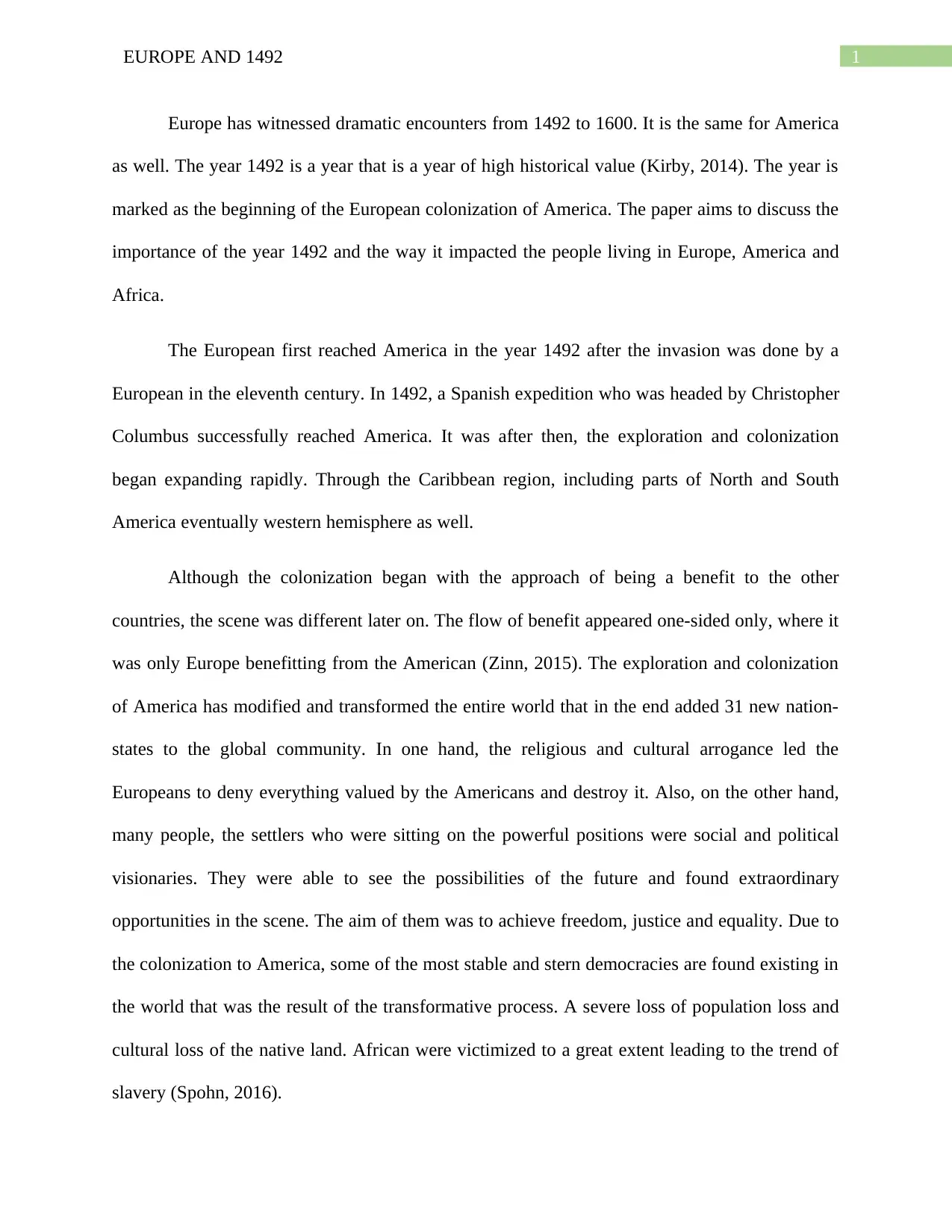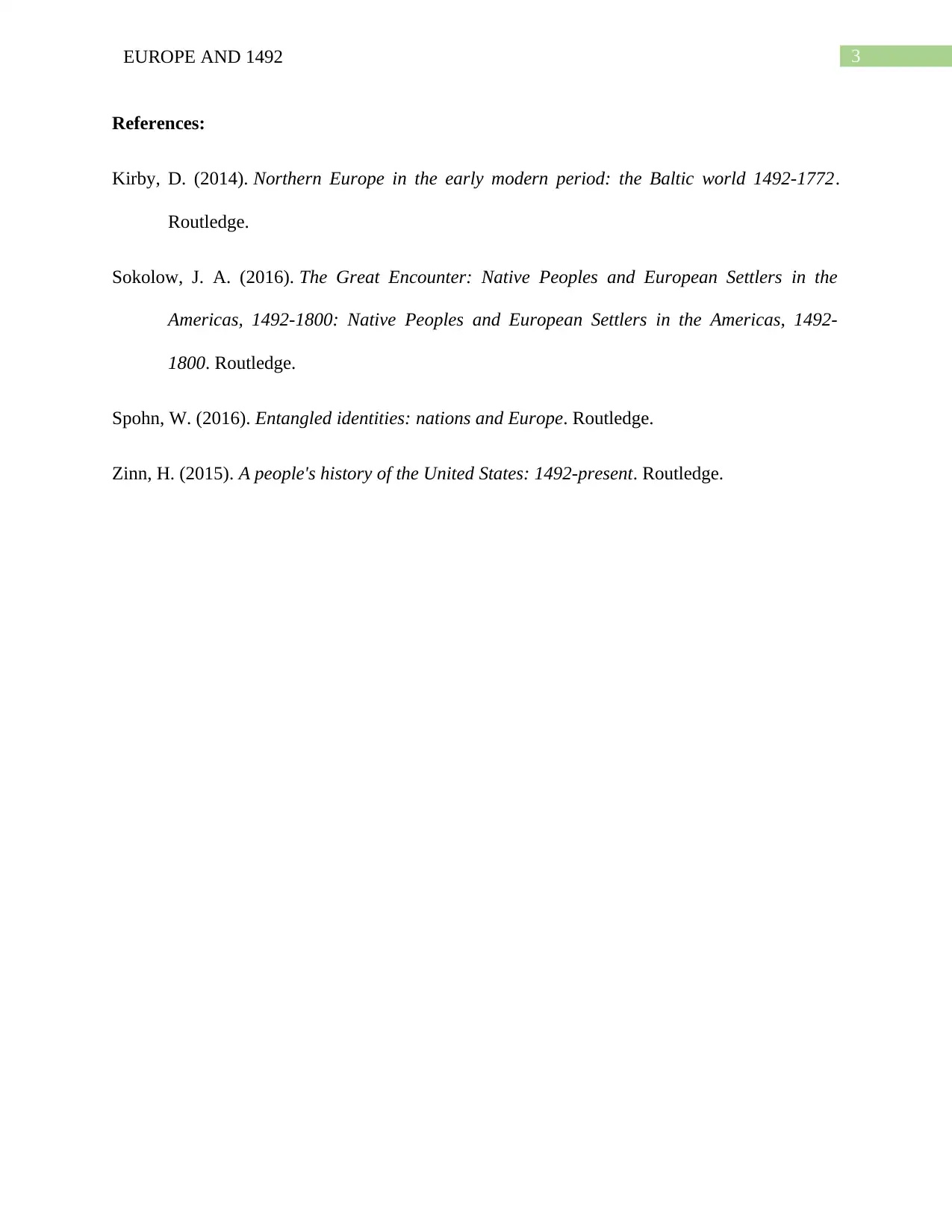Historical Analysis: Europe in 1492 and the Colonization of America
VerifiedAdded on 2023/04/21
|4
|694
|452
Essay
AI Summary
This essay examines the profound historical impact of the year 1492, marking the beginning of European colonization of America. It explores the consequences of this pivotal year on Europe, America, and Africa, highlighting the advantages and disadvantages of colonization. The paper discusses how the arrival of Europeans, led by Christopher Columbus, initiated exploration and trade, leading to both economic prosperity and the introduction of diseases, exploitation, and the transatlantic slave trade. The essay analyzes the cultural and religious arrogance of Europeans, the destruction of native cultures, and the emergence of stable democracies. It also considers the introduction of new technologies, plants, and animals, along with the forced loss of native values and mistreatment. The essay references key historical sources to support its analysis of this transformative period.
1 out of 4











![[object Object]](/_next/static/media/star-bottom.7253800d.svg)